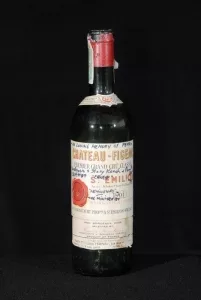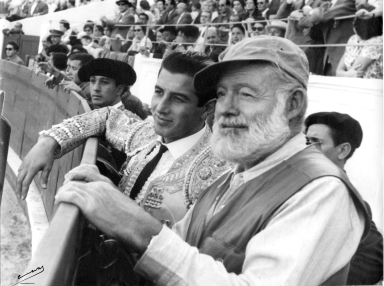Did you know that Hemingway first came to Idaho because of a publicity deal? In 1939, the newly opened Sun Valley Lodge invited him to stay there for free along with other celebrities to drum up interest. Hemingway was very much an influencer of his time, and the brand he created for himself leaves a legacy of celebrity as important as that of his literary career.
Hemingway the brand was born when Hemingway published his second novel, A Farewell to Arms, in 1929. After the book’s publication, he was bothered by press releases that implied (incorrectly) the book was mostly autobiographical, and he decided to take his story and image into his own hands [1]. He began to publish colorful nonfiction accounts of his travels, the bullfighting rings in Spain, and his sportsman hobbies. Hemingway styled himself as a macho man of action – athletic, adventurous, and fearless.
The American public enjoyed reading about Hemingway as much as they enjoyed reading his works of fiction, and media took notice. The mass media revolution rose right alongside Hemingway’s literary and personal fame, and newspapers and magazines were as happy to publish the exciting anecdotes of Hemingway’s personal life as Hemingway was to supply them. Hemingway also took pride in publishing parts of his work in magazines, so that his writing could reach a larger audience [2].

Through this informal partnership with the media and his efforts to reach beyond the literary sphere to the general public, Hemingway was able to control his own narrative while achieving the fame he desired. He became famous not just for his writing but for his lifestyle, admired by people who didn’t even read his books but wanted to be like him – or at least get a taste of adventure through him. He was propelled to the status of an icon of his generation, and his larger-than-life persona became an inseparable part of his legacy.
Hemingway the influencer lives on in today’s books, music, film, product lines, lookalike contests, comic books, and more. The objects that Hemingway kept in his Idaho home tell the story of Hemingway nearly as well as he did during his lifetime and remain an embodiment of his brand after his death. This exhibit explores the enduring allure of Hemingway’s image – and the complicated man beneath it – through the material things he kept and left behind in his final years spent in Idaho.
Sources
[1] https://www.jfklibrary.org/events-and-awards/forums/past-forums/transcripts/a-conversation-with-patrick-hemingway
[2] Fame Became of Him p. 6-12

